#sexypink/Jamaican Artist
Explore tagged Tumblr posts
Text

Sexypink - Jamaican Artist Joshua Solas on now.

Sexypink - the soul of a show.

Sexypink

Sexypink



#sexypink/Jamaican Artist#sexypink/Joshua Solas#tumblr/TheGleaner/ Joshua Solas#digital meets traditional#tumblr/ Jamaican Art
2 notes
·
View notes
Photo
Sexypink - Gosh, sometimes one can wish they knew the Artist and their work. Brother Everald! WAW! Irie! Sexypink exists to give us, the lovers of Caribbean Art the opportunity to experience a little of it.

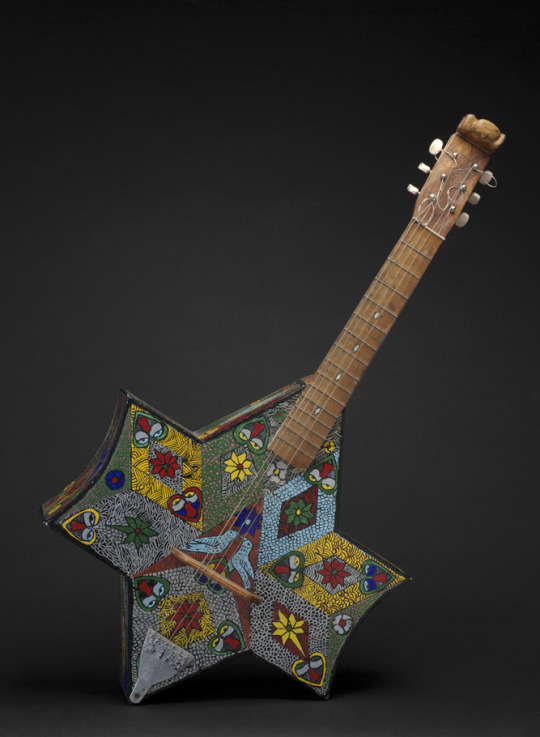

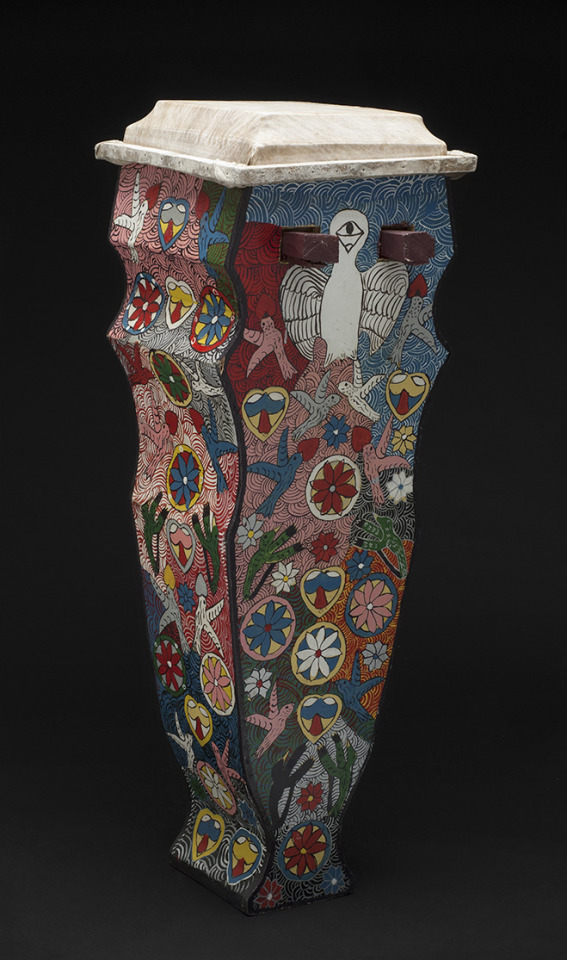

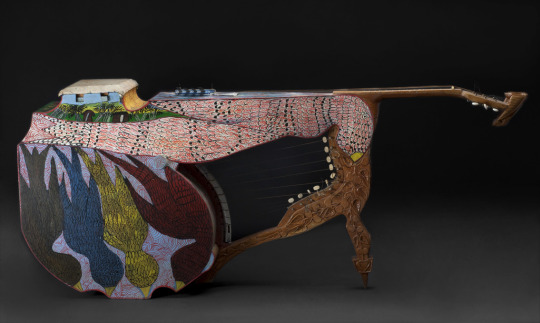
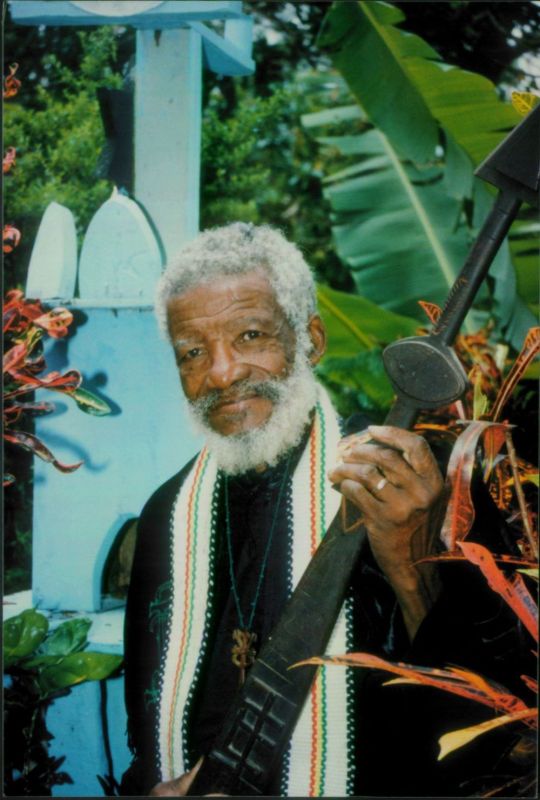
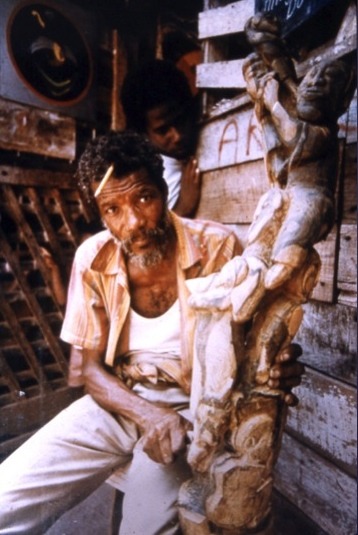
EVERALD BROWN (born 1917 in Clarendon, Jamaica; died 2003 in Brooklyn, NY)
A carpenter by trade, Brown began painting and carving in the late 1960’s while living in Kingston. At this time Brown, who was a self-ordained priest of a sect related to the Ethiopian Orthodox Church, was inspired by a vision to decorate a small church he had built. In addition to adorning the church with his paintings, he also carved ceremonial objects for it. These first works were very well received not only by his own congregation, but by other visitors. This encouraged Brown to continue painting and carving. He began participating in exhibitions and in the early 1970’s received several awards for his work. Because of the close connection between Brown’s artistic and spiritual life, his imagery drew heavily upon his spiritual experiences (including his interest in Rastafarianism), and his visions. In the early 1970’s Brown left Kingston to move to the country with his family. They settled in the remote district of Murray Mountain, the hills near St. Ann. Here on a limestone hill, named Meditation Heights, Brown built a house. The early years on Murray Mountain were especially productive and Brown produced many works, including the first of his highly decorative musical instruments (the drums, dove harps and star banjoes). Since then Brown has continued to live and work in his private sanctuary on Murray Mountain, inspired by nature and his mystical visions.
From Black Art Ancestral Legacy, 1989
#sexypink/Everald Brown#sexypink/ Jamaican Artist/Pioneer#sexypink/sculpture and music#tumblr/Everald Brown#tumblr/ Jamaican Art#Jamaican Artists#Brother Everald
960 notes
·
View notes
Text

SEXYPINK INTERVIEW - JAMAICAN SCULPTOR -LAURA FACEY
In Laura's own words she recalls for Sexypink some of her feelings about making the monument.
..............................................................................
The Naked REDEMPTION SONG Monument
While conceptualizing the design for the monument in 2002, I struggled over the idea of ‘draping’ my figures. In the end I decided it would ‘date’ the work…thinking, being naked would be more timeless.
After the initial shock of Jamaica’s ferocious response to the unveiled monument, I retreated to my own world to ‘wait out’ the outcome. I realized everyone was entitled to their own opinion. Eighteen years after the installation, Maroon Elder Joseph White, explained to me what the monument meant to him and to Jamaica’s history.
“On Emancipation Day, 1st August, 1838, some plantation owners gave another humiliating indignation to their soon to be freed enslaved — they stripped them of their clothing! —‘Bakra seh, uno free but yu clothes no free’. The naked free who took to the roads were arrested for indecent exposure. Their previous owners would be the ones able to release them. The bolder free took to the rivers with the only thing they had left, their modesty and the fact that if accused of being naked they could claim they were bathing.
Rivers symbolically washed away the horror of their lives (the reason the Emancipation figures stand in a pool of flowing water) and shielded them until they arrived at a safer place (rivers follow roads), to, in theory, begin a new life”. After the unveiling, yes, I was in shock for the first weeks then I was in awe of this ferocious debate for and against the naked figures, which played out for months.
Truthfully, I did question my decision for making them naked but now, 20 plus years later, I ‘give it up’, rightly or wrongly, as inspiration passing through me!
Laura Facey
a reflection on Laura Facey's Redemption Song...
Sexypink - So often when visualizing a work, you never know why you may get a strong hunch or follow a need to add specific symbolism. As I read Laura Facey's recollections on the creation of the monumental Redemption Song in Jamaica, I was particularly struck by the Maroon Elders' words about nakedness at the moment of Emancipation and thereafter.
I believe that works like Ms Facey's endure because it must. The reaction to the nudity by so many during the unveiling questions how far we have come in regard to slavery itself. It is still debated whether we can put it behind us. It also begs the question of what is freedom itself?
The slave is always reminded of the price it costs to be present. Imagine that the only solace for being stripped of one's dignity repeatedly was to give the impression of bathing as a passive choice. Ms Facey was correct in her instincts about the bare skin, her Adam and Eve, heads held high in the Jamaican hot sun answer the call to their freedom and beyond.


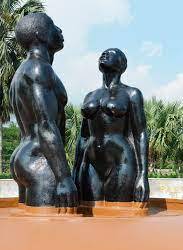
#sexypink/Redemption Song#sexypink/Laura Facey#sexypink/Jamaican iconic sculpture#sexypink/Jamaican Artist#tumblr/Redemption Song#tumblr/Jamaican Sculpture#tumblr/Laura Facey#interview#Artists's process#recalling the process of the work#Laura Facey#Redemption Song#sculpture
5 notes
·
View notes
Text
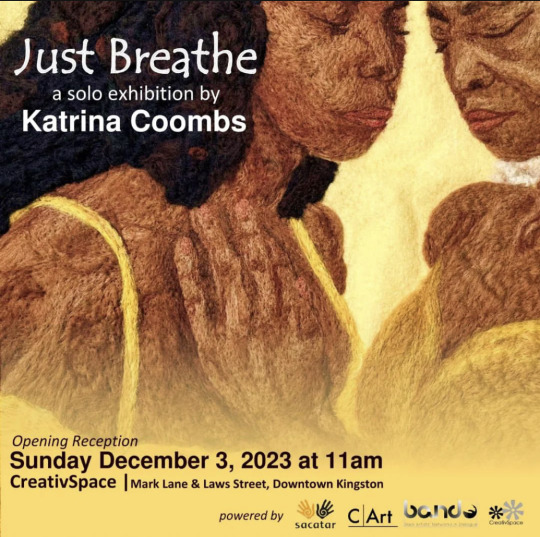
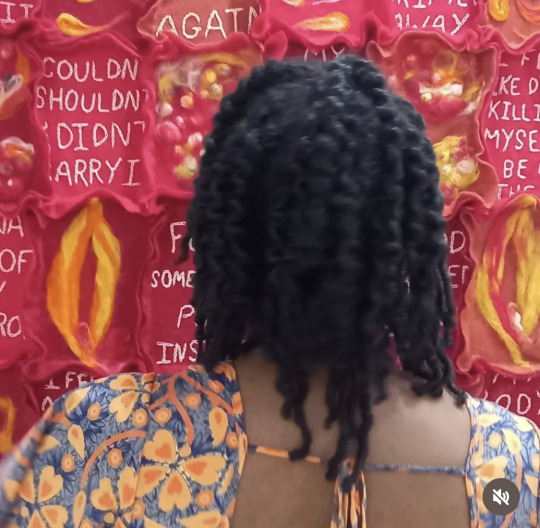
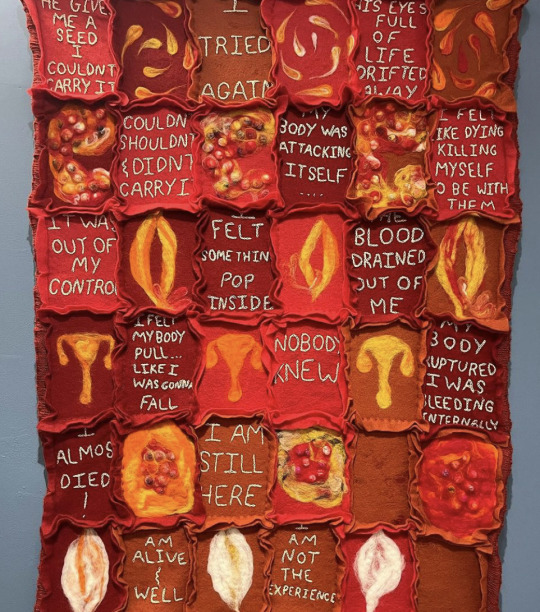




Sexypink - A must see if you are in Jamaica.
#Katrina Coombs#sexypink/Katrina Coombs#sexypink/textile arts#sexypink/Jamaican Artist#tumblr/Katrina Coombs#tumblr/Jamaican Art#tumblr/solo shows
2 notes
·
View notes
Photo


Sexypink - Jasmine Thomas Girvan - Jamaican born/Trinidad and Tobago based Jewellery Designer and Sculptor - Solo show - Window on Memory. If you are in the area do take a look. If not, always remember that you can see her here.
#sexypink/Jasmine Thomas Girvan#sexypink/Brown University Exhibitions#sexypink/Jamaican Artist#sexypink/Caribbean Artists showing abroad#sexypink/solo shows#tumblr/Jasmine Thomas Girvan#tumblr/Window on Memory#tumblr/Sculpture and Jewellery#wearable art#jewellery#sculpture#Jamaican#Jamaican Artist#Jasmine Thomas Girvan#Brown Univerisity#Cohen Gallery#solo shows
2 notes
·
View notes
Text
Sexypink - Ebony Patterson’s renewal.
#sexypink/Jamaican Artist#sexypink/Ebony Patterson#working with paper#Ebony Patterson#Jamaican Artist#tumblr/ paper assemblage#tumblr/Armory Show
0 notes
Text
youtube
Sexypink - A closer look.
#sexypink/Jaqueline Bishop#sexypink/ceramics#sexypink/jamaican art#sexypink/Jamaican Artist#tumblr/jaqueline bishop#tumblr/porcelain#video#Youtube
1 note
·
View note
Text

Sexypink - major browny points!

Sexypink/ Jamaican Oil Painter Alicia Brown.





Alicia Brown’s candid imagery is so very watchable and provocative. - Sexypink
#sexypink/ Jamaican Artist#sexypink/ Alicia Brown#oil painter#tumblr/Alicia Brown#Jamaican#realism#painting
5 notes
·
View notes
Text

Sexypink - Irie!

Sexypink - New Local Space Jamaica

Sexypink
#sexypink/ Jamaican Art#sexypink/financial opportunities for Jamaican Artists#tumblr/ New Local Space Jamaica#money for the arts#Jamaican Art and Artists#NLS
2 notes
·
View notes
Text

Sexypink - The indomitable Jasmine Thomas Girvan.

Read more here on her works :-https://globalvoices.org/2021/11/30/artist-jasmine-thomas-girvan-taps-into-the-eternal-connections-of-black-caribbean-ancestry/
Details from the work of Jasmine Thomas-Girvan - FUGITIVE PATHWAYS - happening in Kingston Jamaica.





#sexypink/ Jasmine Thomas-Girvan#sexypink/ Jamaican Artist#sexypink/jewellery/Art#Global Voices speak#Sustainable Sculpture Residency#tumblr/Fugitive Pathways#tumblr/ Shows in Kingston Jamaica
3 notes
·
View notes
Text

Sexypink - JACQUELINE BISHOP, writer and visual artist, born in Kingston, Jamaica, and who now lives and works in New York City. She has held several Fulbright Fellowships, and exhibited her work widely in North America, Europe and North Africa. She is also an Associate Professor in the School of Liberal Studies at New York University.
On one hand, the market woman/huckster is the most ubiquitous figure to emerge from plantation Jamaica. Yet, as pervasive as the figure of the market woman is in Jamaican and Caribbean art and visual culture, she remains critically overlooked. In this set of fifteen dishes, I am both paying homage to the market woman—centering her importance to Caribbean society from the period of slavery onwards—and placing her within a critical context. In particular, I place the market woman within a long tradition of female labor depicted in diverse imagery that I have sourced online, including early Jamaican postcards, paintings of enslaved women from Brazil, the colonial paintings of the Italian Agostino Brunias, and present-day photographs, which I collage alongside floral and abolitionist imagery.
I work in ceramics because all the women around me as I grew up—my mother, my grandmother, my great-grandmother—cherished ceramic dinner plates. These were centerpieces kept in one of their most important acquisitions, a specially made mahogany cabinet. To fabricate the plates, it is important that I am working with Emma Price, a British ceramicist based in Stoke-on-Trent in the former Spode factories. In the realization of the series, that connection imbues them with a meaning that shows the long and enduring relationship between England and Jamaica. For that same reason, British Art Studies is a fitting venue for their first ever publication and partner to create an accompanying film exploring the plates and their themes.
Though the likenesses of none of the women in my family are represented in this series, centering the market woman is my way of paying homage to my great-grandmother Celeste Walker, who I grew up knowing very well, and who was a market woman/huckster/milkwoman par excellence. Celeste was born in the tiny district of Nonsuch hidden high in the Blue Mountains in Portland Parish on the island of Jamaica. Her mother died on the way home from a market, when my great-grandmother was too young to even remember her face. In her adulthood, while my great-grandfather farmed the land, my great-grandmother was the huckster who could easily carry bunches of bananas and baskets of food on her head; the market woman who travelled to far away Kingston to sell in Coronation Market, the largest market on the island. She also hawked fresh fish, and prepared and sold coconut oil, ginger beer, cut flowers, and cocoa beans that were pounded in a heavy wooden mortar. I remember her in my childhood as the milkwoman waking very early in the morning and walking through the district selling fresh cow’s milk. The tradition of huckstering would be passed on to my grandmother who relished the role in her older years. My hope in doing this work is to give much respect to the market women of the Jamaican and larger Atlantic world who have fed, and continue to feed, nations. The market woman is the defining symbol of Jamaican and Caribbean societies.
My work integrates the mediums of painting, drawing and photography to explore issues of home, ancestry, family, connectivity and belonging. As someone who has lived longer outside of my birthplace of Jamaica, than I have lived on the island, I am acutely aware of what it means to be simultaneously an insider and an outsider. This ability to see the world from multiple psychological and territorial spaces has led to the development of a particular lens that allows me to view a given environment from a distance. Because I am also a fiction writer and poet as well as a visual artist, the text and narrative are significant parts of my artistic practice.
Oftentimes I utilize a process of competing narratives to have the viewer participate in the creation of meaning. In my “Folly” series I recount a story I heard as a child, of two tales of a “haunted” house. In time, I researched the history of the house and through a process of photomontage combined photographs I took with archival footage to try and tell the two stories. The ghostly images of the past occupants are integrated into the walls and on the grounds of the present-day ruins. The overall effect is spectral and haunting. I also used this process of photomontage in an ongoing series of ethereal and transcendent “Childhood Memories,” in which characters are often split between heaven and earth. There is a palpable sense of loss in these images as characters seek to inhabit a time and a place long gone.
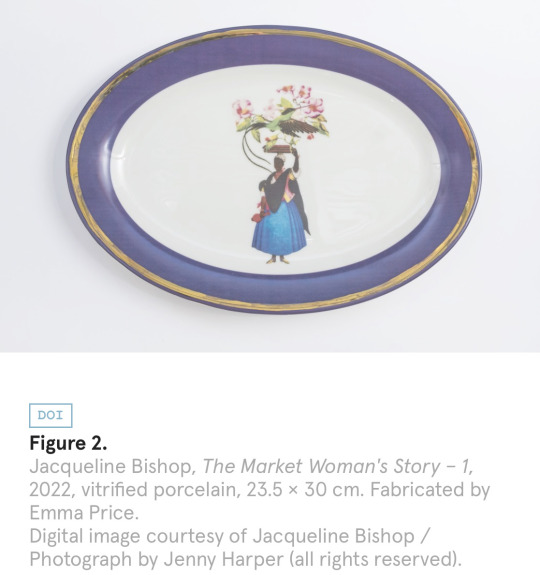
The “Babylon” and “Zion” paintings are about the Rastafarian ideas of Babylon being a place of captivity and oppression while Zion symbolizes a utopian place of unity and peace. In the Babylon series, I write the lyrics from songs and poems to create text-based drip paintings leading up to the “Hanging Gardens of Babylon,” in which I use popular dancehall posters to evoke the inner-city Babylonian “walls” of Kingston. The Zion series is comprised largely of monochrome paintings to delineate this symbolic paradise. Glitter is present in these works not only as a representation of the paradise that Rastafarians seek in the Biblical homeland of Zion but also as a commentary on the ‘bling and glitter’ culture that has enveloped much of Jamaican society. Consequently, my work is very much engaged with helping me to understand my heritage.
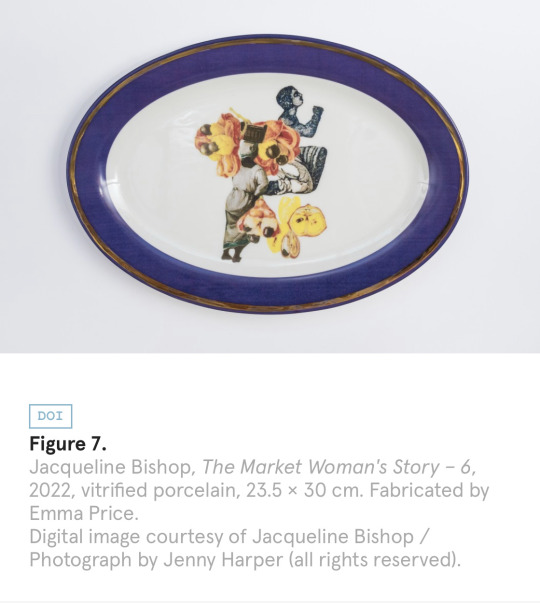
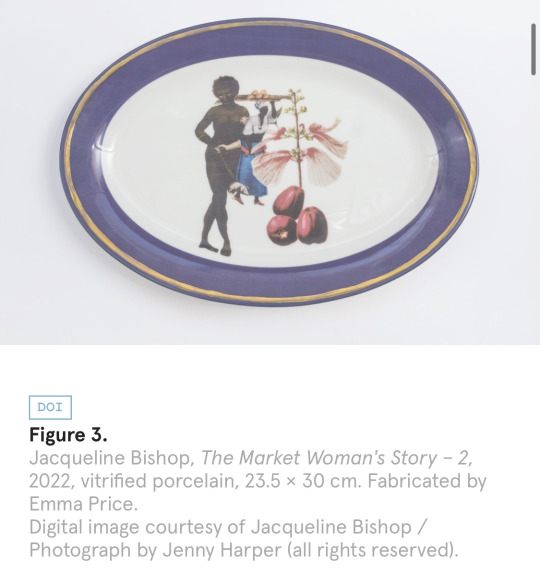
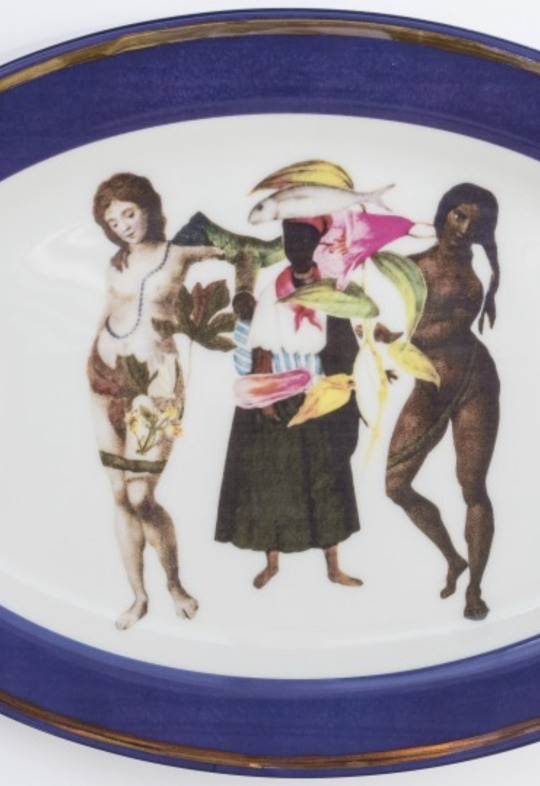
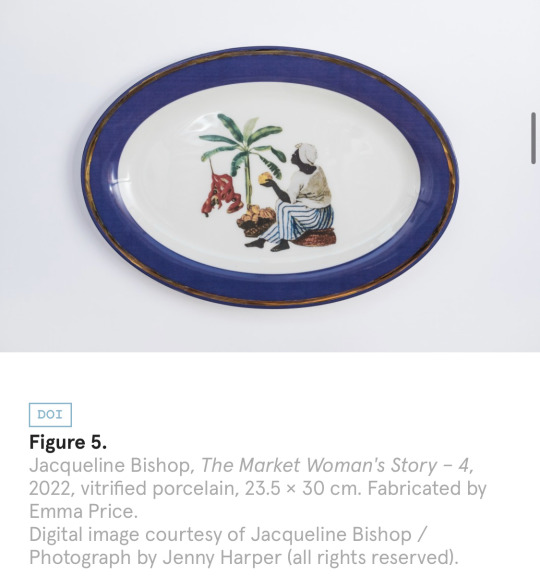
#sexypink/Jaqueline Bishop#sexypink/Jamaican Art#sexypink/ceramics#tumblr/Jaqueline Bishop#ceramics#Jamaican Artist#plates#porcelain pieces#Jaqueline Bishop
2 notes
·
View notes
Quote
“I Believe We All Have a Uniqueness About Us That Sets Us Apart.”
Sharon Norwood - Jamaican|Canadian Artist
#sexypink/Sharon Norwood#sexypink/Jamaican/Canadian Artist#sexypink/quotes by Artists#tumblr/Sharon Norwood#interdisciplinary artist#ceramic artist
3 notes
·
View notes
Text

Sexypink - Twenty twenty-five has not brought with it flying cars or teleportation. It has given our small orbit of the Caribbean an exciting and promising start to the powerful representations from Artists in this region of all stripe.
One can dig one’s hands into the collective creativity of portraiture heavily costumed in mythology and autobiography. One’s fingers become all pruny with the long lingering over monumental soft sculpture and projected video stills.
Remember these names, Gumbs, Watts, Honeywell and Mirabel.
Sonn Nagai, Phoenix and Pimentel Lins.
Patterson, Thomas, Cozier, Cyrille, Forde, Mondestin, Ashing, Lewis and St.Hilaire.
No matter what part of the world our island bredren settle, they never settle. Like a tropical storm watch, they have come to make waves.
~sexypink
#sexypink/January 2025#sexypink/Caribbean Artists#sexypink/month in review#tumblr/David Gumbs/St.Martins#tumblr/Alanis Forde/Barbados#tumblr/Christopher Cozier/Trinidad and Tobago#tumblr/AdaM Patterson/Barbadian#tumblr/ Akilah Watts/Barbados#tumblr/Ronald Cyrille/ Dominica/Guadeloupe#tumblr/Phillip Thomas/Jamaica#tumblr/Sonn Ngai / Jamaica#tumblr/Tau Lewis/Jamaican heritage#tumblr/ Aurora Honeywell/Trinidad and Tobago#tumblr/Kathia St.Hilaire/Haiti#tumblr/Lygia Pimentel Lins/Brazil#tumblr/Johanna Mirabel/French of Guyanese heritage#tumblr/Brian Ashing/Trinidad and Tobago#tumblr/ Shari Phoenix/Barbados#tumblr/ Mafalda Nicholas Mondestin/Haitian#tumblr/Richard Nattoo/Jamaican
0 notes
Text

Sexypink - Jamaican Painter Phillip Thomas paintings are majestic in both theme and technical skill. He takes you into unexpected places and you willingly go along for the ride because he leaves enough breadcrumbs to wet the appetite.

Sexypink - Phillip Thomas - The Bullfight - writing on this body of work by the Painter himself:-




Sexypink - Phillip Thomas - Donkey she dih werl nuh level

Sexypink - Phillip Thomas - detail



#sexypink/Phillip Thomas#sexypink/Jamaican Artists#sexypink/Jamaican Painting#tumblr/ Jamaican Art#Phillip Thomas#tumblr/Jamaican Painter#collage#painting
1 note
·
View note
Text

Sexypink - read about it here :- more on Sonn Ngai.
#sexypink/Sonn Ngai#sexypink/PREE Lit magazine#sexypink/ writing on Art#tumblr/ Jamaican digital artist#tumblr/PREE Lit magazine#writing#Jamaican Arts
0 notes
Text

Sexypink - Jamaican Digital Artist Mark Robinson (Sonn Nagai) takes us on an Afrofuturistic journey.
_he.datboii.legba_untitled manticores III - Digital 2024


Sexypink - read about the Surrealistic visions of Jamaican Digital Artist Sonn Ngai.

Sexypink - Sonn Ngai - Paimon: the chariot - Digital 2024

Sexypink - Sonn Ngai - Jupiter in Gemini - Digital 2024

Sexypink - Sonn Ngai - Guardian - Digital 2024

Sexypink - Sonn Ngai - untitled drawing - Digital - 2024
#Jamaican Digital Artist#sexypink/ Jamaican Digital Artist#sexypink/Mark Robinson/ Sonn Ngai#sexypink/Surrealism#sexypink/Afrosurrealism#tumblr/collage#tumblr/digital#tumblr/afrosurrealism#tumblr/Sonn Ngai
1 note
·
View note